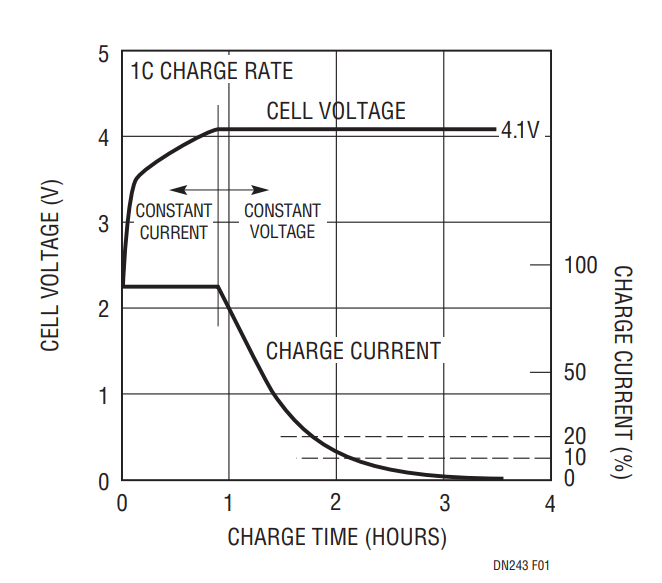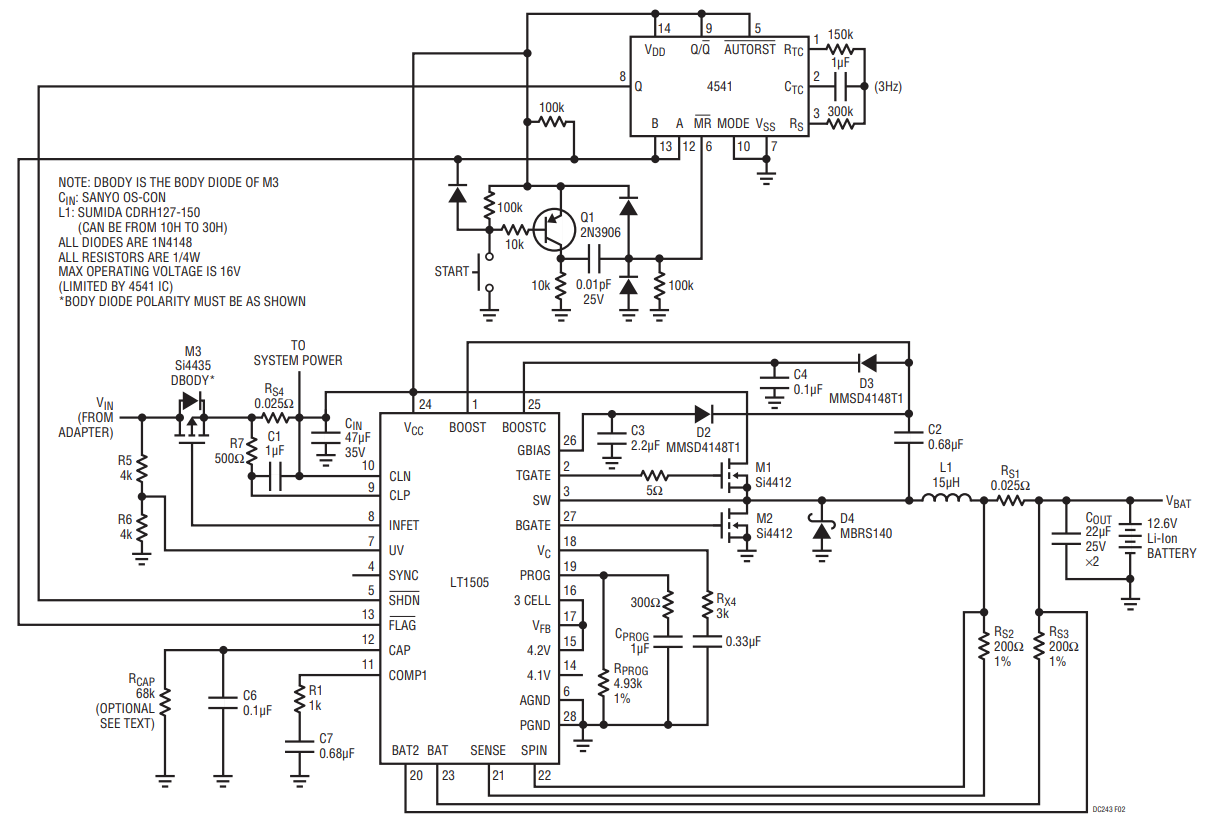Design Note 244: Simple Li-Ion Charge Termination Using the LT1505
Li-Ion batteries are normally charged with a current limited constant voltage for a fixed length of time. At the end of this time period, the voltage must be removed to prevent internal chemistry changes in the battery. At a minimum, a timer is needed to terminate the charging process after the maximum amount of time required to fully charge the battery. However, if the battery is never fully discharged, this overall time period is too long, forcing a longer charge cycle than is really needed. One of the ways to determine when a Li-Ion battery is in a fully charged state is to monitor the charge current flowing into the battery during the constant voltage phase of the charging cycle. When the charge current falls below a preset level, the battery is fully charged and the charger can be disabled. The problem is how to detect this low level of current so as to terminate the charge cycle. The LT1505 produces a signal to allow this to happen.
The LT1505 provides a logic signal output called “FLAG” that is intended to help implement a Li-Ion charge termination mechanism. In the constant voltage portion of the charge cycle, the battery continues to accept charge and the charge current continues to drop. When the charge current drops below 20% of the full-scale value, the FLAG output goes low.
Normally, the FLAG function is used to let the system know that the battery is nearly fully charged. However, the flag can also be used to change the time scale of the overall charge-cycle timer and convert it to a top-off charge timer. Thus, the user gets a battery that is almost fully charged, but the charger remains on so that the remaining time can be used to charge the battery to 100%, after which the charger will turn off.
The nature of Li-Ion battery charging is such that the battery spends about half of the total charge time receiving about 85% of its capacity and the remaining half to receive the last 15%. The LT1505’s 20% current threshold represents a compromise between charge time and a fully charged battery. It represents around 85% of a typical battery’s charge capacity.

Figure 1. Typical Lithium-Ion Charge Characteristics.
The circuit in Figure 2 uses a CD4541 programmable timer IC controlled by the LT1505. When a low-true reset start pulse, created by the pulse circuit around Q1, is sensed by the MR(L) pin of the CD4541, the internal counters are reset and begin counting at a rate of 3Hz for 216 (65,536) counts, or approximately three hours. If the FLAG pin of the LT1505 goes low, a new reset pulse is generated and the count is changed to 213 (8192) counts or approximately 45 minutes.

Figure 2. LT1505 Li-Ion Charger with Termination.
Another popular current trip point is 10% of full scale for about 90% or more battery capacity charge. The trade-off is charge time. Since the current falls asymptotically toward zero, there is a significantly longer time period needed to reach the 10% point relative to the 20% point. The choice of 20% or 10% is a system design issue. To rescale the trip point, a resistor, RCAP, is added between the LT1505 CAP pin and ground in parallel with the existing 0.1μF capacitor. For a 4A charger, the RCAP resistor is 68k for a 400mA threshold. Threshold values as low as 7.5% of full scale are possible. However, below this level the repeatable accuracy becomes poor due to analog offset voltage inside the LT1505. Consult Linear Technology’s Application department for more information.
